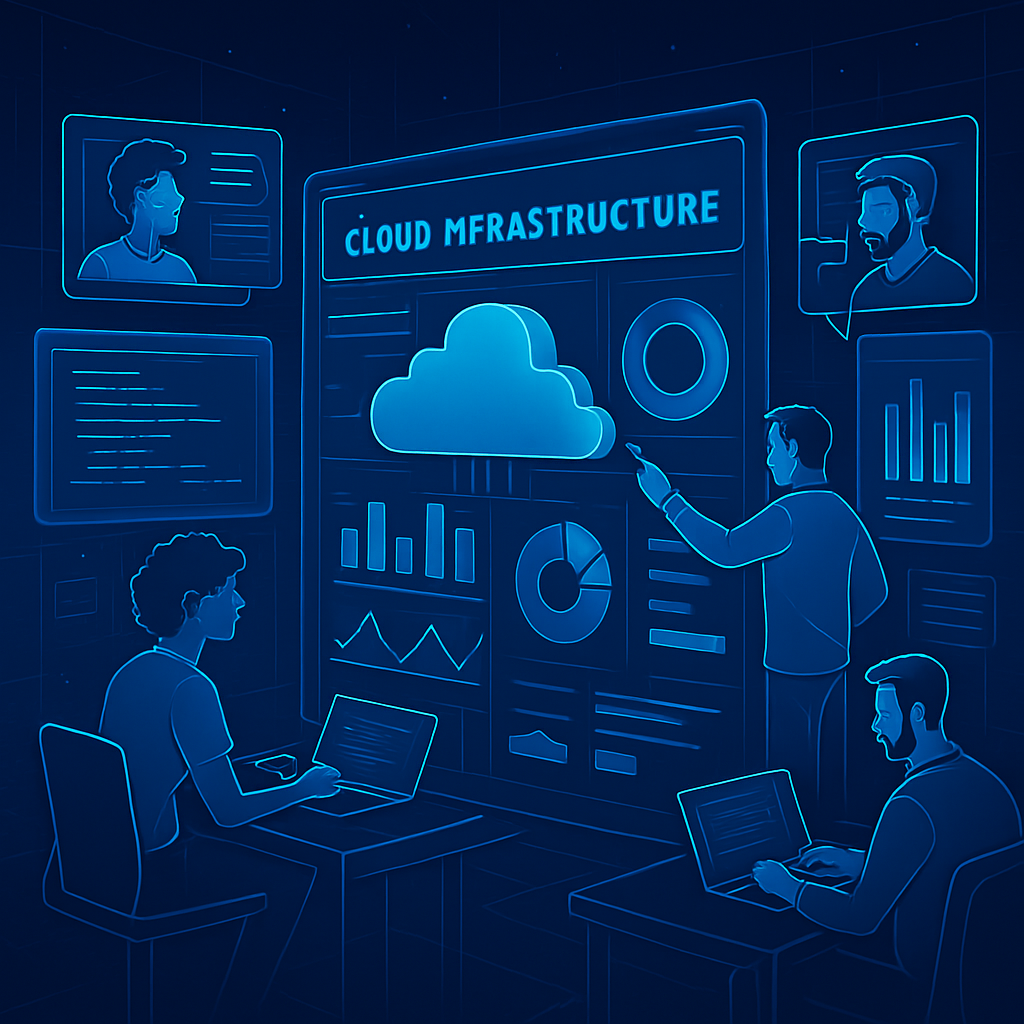In the rapidly evolving landscape of cloud technologies, a new beacon of innovation has emerged: Lucidity. Honored as the Developer Tools and Infrastructure SaaS Startup of the Year by SaaSBoomi, Lucidity is redefining the benchmarks for software development, cloud services, and infrastructure management. This prestigious recognition by SaaSBoomi, India’s eminent B2B SaaS community, highlights Lucidity’s groundbreaking solutions in multi-cloud storage management—a sector witnessing unprecedented growth and transformation. As enterprises increasingly embrace hybrid and multi-cloud environments, the necessity for seamless, scalable, and secure infrastructure tools grows ever more critical. Lucidity steps into this space with robust offerings tailored specifically for modern enterprises that demand agility and reliability.
Lucidity’s ascent is not just a testament to its product innovation but also to its visionary approach towards developer tools and infrastructure SaaS. By pushing the boundaries of technology solutions, the startup has garnered attention from industry veterans and emerging tech enthusiasts alike. This spotlight aligns with global trends where startups are not only creating supplemental tools but are revolutionizing core infrastructure to enhance efficiency and reduce operational complexity. As cloud adoption surges worldwide, the need for intelligent solutions like those provided by Lucidity becomes increasingly urgent for businesses seeking competitive advantage.
What makes Lucidity’s journey particularly compelling is its unique positioning as the only multi-cloud storage management platform purpose-built for contemporary enterprise needs. This differentiation underscores the startup’s capability to address challenges associated with multi-cloud orchestration—such as data migration, cost optimization, security compliance, and unified management—through an integrated SaaS platform. Lucidity’s approach demonstrates a keen understanding of the evolving infrastructure needs in the SaaS domain, where agility and innovation must converge to deliver tangible business outcomes.
The recognition by SaaSBoomi not only acknowledges Lucidity’s technical excellence but also signifies the rising influence of startups that challenge industry norms and catalyze digital transformation. In a market crowded with nascent solutions, Lucidity’s distinct blend of innovation and focus on infrastructure tools sets a new precedent for upcoming SaaS ventures vying to make an impact. This accolade serves as a milestone, propelling the company into a significant growth trajectory and inspiring a wave of technology startups to envision broader horizons in software development and cloud infrastructure domains.
How Lucidity’s Multi-Cloud Storage Platform Revolutionizes Developer Tools and Infrastructure Management
Lucidity’s core innovation lies in its industry-first multi-cloud storage management platform that seamlessly integrates into the developer ecosystem, tackling the complexities of hybrid cloud architectures head-on. Traditional infrastructure solutions have often been constrained by siloed cloud environments, making cross-cloud management cumbersome, risky, and costly. Lucidity bridges these gaps, offering developers and IT teams a unified interface that consolidates storage management across leading cloud providers.
This consolidation is crucial in today’s software development environment where speed and flexibility govern product cycles. Developers require transparent and reliable tools that enable easy orchestration of resources without the overhead of managing disparate systems. Lucidity’s platform encapsulates these demands by automating data placement, optimizing storage costs, and ensuring compliance with enterprise-grade security policies—serving as an indispensable tool for developers focused on velocity and quality.
Key Features that Enhance Developer Productivity
- Unified Cloud Storage Dashboard: Provides a single pane of glass to monitor and manage storage across AWS, Azure, Google Cloud, and other providers.
- Automated Data Tiering: Intelligently moves data between cold, warm, and hot storage tiers optimizing cost and performance.
- Security & Compliance Automation: Integrates with native cloud identity and policy management services to uphold stringent security standards seamlessly.
- APIs for Custom Integrations: Enables developers to programmatically control storage operations, fitting the tools into existing CI/CD pipelines.
- Real-Time Analytics: Offers insights on storage usage trends, bottlenecks, and recommendations to proactively manage infrastructure.
These features collectively empower software development teams to focus on building applications rather than wrestling with storage overhead. By embedding automation and intelligence within infrastructure management, Lucidity sets a new standard of operational excellence.
Use Case: Streamlining Cloud Migration for an E-commerce Platform
Consider the case of a fast-growing e-commerce startup needing to migrate terabytes of customer and transactional data across multiple cloud providers for redundancy and performance. Leveraging Lucidity’s platform, the startup was able to:
- Automate the tiered migration with minimal downtime.
- Optimize storage costs by dynamically allocating data according to usage patterns.
- Implement compliance strategies with automated encryption and role-based access controls.
- Remain agile by integrating storage monitoring into their existing devops workflows.
This practical deployment highlights how Lucidity’s platform resolves critical pain points in developer tools and infrastructure, marrying innovation with business needs.
| Feature | Benefit | Impact on Development |
|---|---|---|
| Unified Dashboard | Centralized control and monitoring | Reduces management overhead and errors |
| Automated Data Tiering | Cost-effectiveness and performance balance | Enables budget-conscious scaling |
| Security Automation | Consistent compliance | Ensures data protection without manual intervention |
| API Integration | Seamless workflow embedding | Accelerates feature deployment cycles |
| Real-Time Analytics | Proactive resource management | Improves uptime and service quality |

Impact of SaaSBoomi’s Recognition on SaaS Innovation and Startup Ecosystem
The accolade bestowed upon Lucidity by SaaSBoomi resonates well beyond a simple award. It reflects the dynamic ecosystem in India and globally, where SaaS startups innovate relentlessly to solve infrastructure challenges essential to digital transformation. SaaSBoomi acts as a pivotal platform shaping conversations, investments, and collaborations within this space, helping startups like Lucidity gain the visibility needed to attract strategic partnerships and funding.
By categorizing Lucidity as the leading developer tools and infrastructure SaaS startup of the year, SaaSBoomi signals the growing importance of infrastructure verticals within the SaaS market—traditionally dominated by application-layer software. This shift signifies how foundational technology solutions are gaining traction as businesses reconsider how to build resilient and scalable systems.
Broader Ecosystem Benefits
- Elevating Infrastructure Startups: Encourages venture capitalists and corporate investors to diversify portfolios beyond front-end products.
- Boosting Collaborative Innovation: Facilitates knowledge exchange among startups, which can co-develop complementary technologies.
- Enhancing Developer Tooling Standards: Drives industry-wide improvements by raising expectations for usability, integration, and automation.
- Global Recognition for Indian SaaS: Highlights the maturity of the Indian SaaS sector on the world stage, inspiring new entrants and partnerships.
- Talent Attraction and Retention: Creates opportunities for top engineering and business talent to contribute to breakthrough projects.
This recognition can catalyze a virtuous cycle where infrastructure SaaS startups become key agents driving digital agendas in enterprises. Lucidity stands as a model illustrating how focused technological innovation aligns with market needs to secure prestigious acknowledgment.
| Stakeholder | Benefit from SaaSBoomi Recognition | Long-Term Impact |
|---|---|---|
| Startups like Lucidity | Increased visibility, funding, and partnerships | Accelerated growth and innovation capacity |
| Investors & VCs | Access to vetted infrastructure startups | Diversification and higher returns |
| Developers & Engineers | Access to better tooling and innovation | Enhanced productivity and job satisfaction |
| Enterprises | Improved infrastructure resilience | Competitive advantage through digital innovation |
| SaaSBoomi Community | Stronger SaaS ecosystem engagement | Leadership in global SaaS discourse |
Emerging Trends in Developer Tools and Cloud Infrastructure Shaping SaaS Startups’ Future
Looking toward the near future, the software development and cloud infrastructure sectors are poised to undergo transformative changes. Lucidity’s recognition spotlights several trends that will shape how developer tools evolve and how SaaS startups design their infrastructure offerings.
1. AI-Driven Infrastructure Management
Artificial intelligence is becoming integral to managing cloud infrastructure efficiently. With growing complexity across hybrid environments, AI algorithms help automate capacity planning, anomaly detection, and resource optimization. Lucidity’s integration of analytics and automated controls exemplifies this trend.
2. Multi-Cloud and Hybrid Cloud Enablement
As enterprises reject vendor lock-in, hybrid cloud architectures grow in prominence. Tools that simplify seamless data movement and policy enforcement across clouds will dominate the infrastructure space.
3. Developer-First Infrastructure Tools
There’s increasing demand for developer tools that are deeply integrated into the software lifecycle. Platforms like Lucidity provide APIs and automation geared to developer workflows to support DevOps agility.
4. Security and Compliance as Built-in Features
Infrastructure SaaS providers are embedding security compliance directly into their tools, reducing friction and risk for enterprises operating in regulated industries.
5. Edge Computing and Decentralized Storage
The rise of edge computing demands storage solutions that replicate and process data closer to users. startups innovating in this arena will significantly impact application performance and data sovereignty.
- Incorporate AI analytics for predictive infrastructure maintenance.
- Build extensible APIs for diverse developer environments.
- Focus on secure, encrypted storage protocols.
- Adopt hybrid cloud strategies supporting both on-premises and public clouds.
- Leverage edge computing to reduce latency and improve responsiveness.
| Emerging Trend | Description | Example Startups |
|---|---|---|
| AI-Driven Management | Automates cloud resource optimization and anomaly detection | Lucidity, Rain AI, Snyk AI Platform |
| Multi-Cloud Enablement | Supports seamless data movement across cloud providers | Lucidity, FireCrawl, Khosla-backed startups |
| Developer-First Tools | Integrated into developer workflows with robust APIs | Lucidity, Grammarly (AI integration) |
| Security & Compliance | Baked into infrastructure tooling to reduce risk | Lucidity, Snyk AI Platform |
| Edge Computing | Decentralized data processing to enhance performance | Rain AI, FireCrawl |
How Lucidity’s Success Inspires the SaaS Startup Landscape and Developer Communities
The trajectory of Lucidity as a SaaS startup offers a powerful narrative for emerging software ventures and developer communities worldwide. Its ability to forge innovation in core infrastructure sheds light on new possibilities within traditionally complex technical domains. By focusing on delivering technology solutions that ease developers’ challenges, Lucidity empowers teams to innovate faster and more confidently.
Lucidity’s growth also illustrates how startup ecosystems can shift from mere service delivery models to technology creators that directly influence infrastructure paradigms. Such a transition is crucial for sustained competitiveness and reflects the evolution of ecosystems like India’s SaaS sector, which is gaining global acclaim by nurturing startups pushing the technological envelope.
- Encourages developer-centric product development through active engagement and feedback loops.
- Drives investment interest by exemplifying scalable and impactful infrastructure solutions.
- Creates new collaboration opportunities within startup networks and open source communities.
- Showcases Indian startups on global platforms enabling cross-border partnerships.
- Inspires focus on automation and AI as key drivers in infrastructure innovation.
| Impact Area | Details | Potential Outcome |
|---|---|---|
| Developer Communities | Access to better tools and resources | Higher productivity and innovation |
| Startup Ecosystem | Recognition and validation | Access to funding and markets |
| Investment Landscape | Attracting capital to infrastructure startups | Sustained growth and innovation |
| Global Partnerships | Cross-border collaborations | Technology exchange and expansion |
| Technology Evolution | Adoption of AI and automation | Enhanced infrastructure capabilities |

Challenges and Opportunities for Developer Tools and Infrastructure SaaS Startups in the Expanding Cloud Era
While Lucidity’s success exemplifies significant progress, the broader developer tools and infrastructure SaaS space presents ongoing challenges and vast opportunities. The rise of cloud adoption introduces complexities in scalability, interoperability, and security that startups must navigate to maintain an edge.
Challenges include:
- Vendor Lock-in: Overcoming reliance on specific cloud providers to offer truly agnostic solutions.
- Security Threats: Addressing sophisticated cyber threats while maintaining user-friendly interfaces.
- Rapidly Evolving Requirements: Adapting quickly to new developer needs and infrastructure trends.
- Competition Intensity: Differentiating products in a crowded SaaS marketplace.
At the same time, key opportunities are emerging:
- AI and Automation: Leveraging intelligent analytics to optimize infrastructure management.
- Hybrid Cloud Solutions: Catering to enterprises seeking flexible deployment models.
- Security-First Platforms: Providing integrated compliance tools out-of-the-box.
- Developer Ecosystem Engagement: Building platforms that encourage customization and collaboration.
Mastering these facets will determine the trajectory of startups aiming to replicate Lucidity’s impact. They must embrace technological shifts and leverage community feedback to continuously refine software development tooling and infrastructure services.
| Challenge | Description | Startup Response Strategy |
|---|---|---|
| Vendor Lock-in | Cloud provider dependency limiting flexibility | Developing multi-cloud agnostic solutions like Lucidity |
| Security Threats | Increasing cyberattacks targeting cloud infrastructure | Embedding advanced security protocols and compliance |
| Evolving Requirements | Rapid change in developer and enterprise needs | Agile development and close user collaboration |
| Competition | Market saturation with similar SaaS offerings | Focus on unique value propositions and integrations |
As the SaaS market grows, insights into startups like Lucidity provide valuable lessons on balancing innovation with practical software development and infrastructure demands. The path ahead is challenging but full of promise for startups that can skillfully navigate this complex terrain.
Frequently Asked Questions about Lucidity and Developer Tools in SaaS Infrastructure
- What sets Lucidity apart from other developer tools and infrastructure SaaS startups?
Lucidity’s unique capability as the only multi-cloud storage management platform purpose-built for modern enterprises differentiates it by providing unified management, automation, and security features not typically found together in other solutions.
- How does SaaSBoomi’s recognition impact Lucidity’s growth?
Being named Developer Tools and Infrastructure SaaS Startup of the Year by SaaSBoomi elevates Lucidity’s brand visibility, attracting new customers, investors, and strategic partnerships essential for scaling its operations.
- Why is multi-cloud storage management important for modern enterprises?
Enterprises use multiple cloud providers to optimize costs, ensure redundancy, and leverage best-of-breed services. Managing storage across these clouds efficiently reduces operational complexity and enhances data security.
- What future trends will influence developer tools and infrastructure SaaS startups?
AI-driven management, multi-cloud enablement, security integration, and edge computing are key trends that will shape how developer tools evolve and how infrastructure services are delivered.
- How can startups navigate challenges such as vendor lock-in and security threats?
Startups can overcome these by building cloud-agnostic platforms, embedding security as a core feature, adopting agile methods, and engaging developer communities for continuous feedback.


